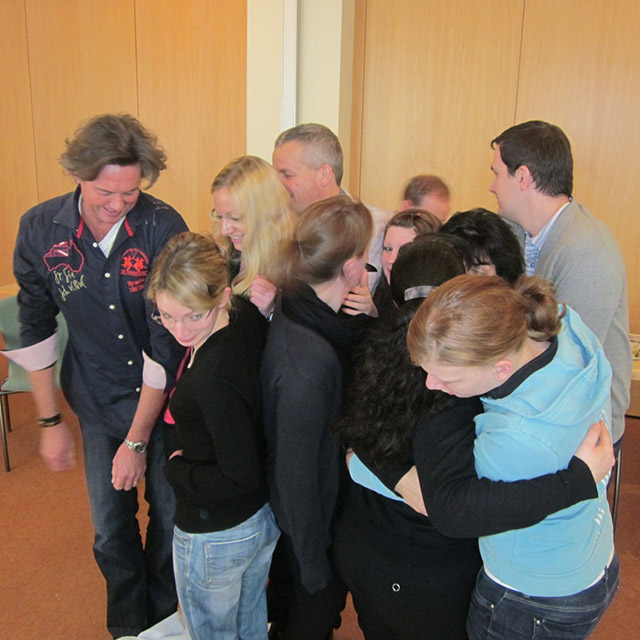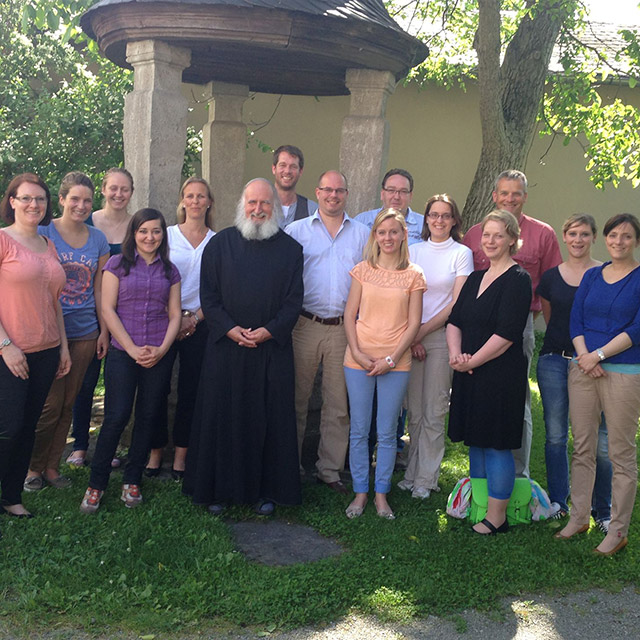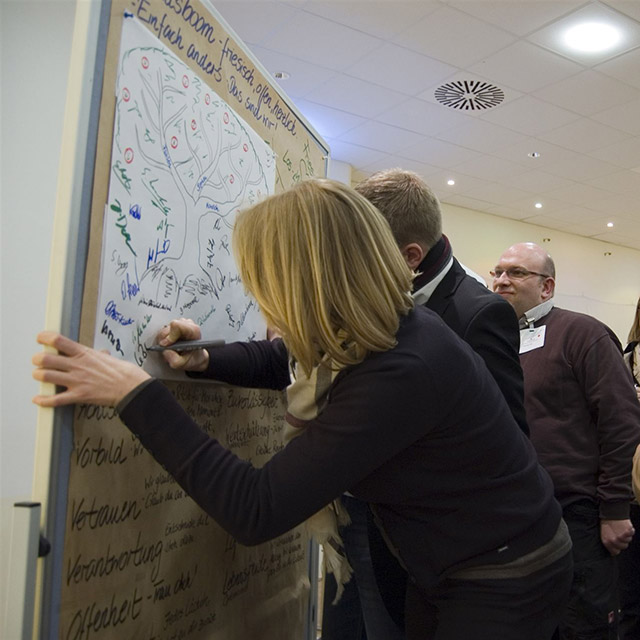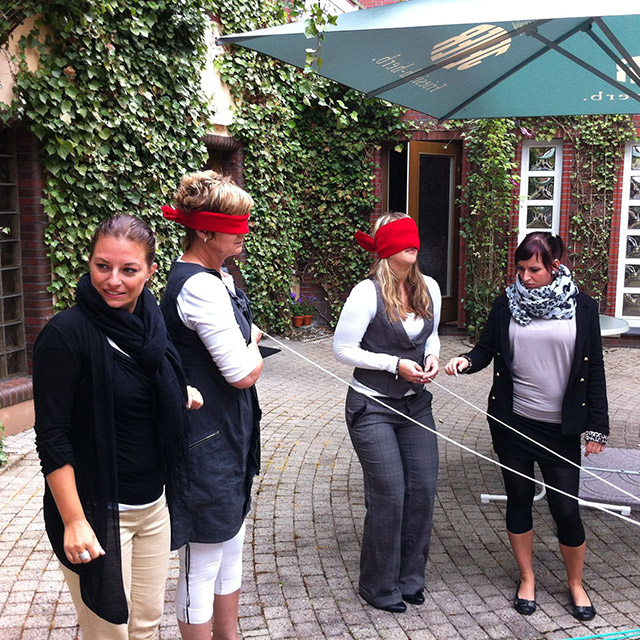Upstalsboom
Although Janssen’s vision sounds like a noble goal, the company actually increased the measured satisfaction of its 600 employees by 80 percent over the last four years. Voluntary monastery retreats for executives, an open focus on all the accompanying measures for the happiness of every employee, and in-house personality training played a significant role.
“We are more than just on the right track,” attests Thomas Peruzzo, hotel director of a house on the Baltic Sea. “In the 17 years that I have been working in the hospitality industry, I have never seen anything like what is lived here. The employee as a whole is placed in focus, and in an exquisite way.”
This change in attitude seems to be getting some attention in the industry. The company received 3,000 applications for a hotel opening. The always-good mood of staff is equally experienced by guests. The independently measured recommendation for Upstalsboom hotels rose to 98 percent. The turnover of the hotel chain doubled within only three years.
TIME TO REFLECT
Until 2009, management of Upstalsboom assumed that the company was running smoothly and that employees were feeling great. However, a newly hired personnel developer suggested carrying out an anonymous employee survey. The result was devastating.
Many of the 600 employees took the opportunity to vent their frustrations. “I need a supervisor with a different name, other than …” was one of several emotional responses. “The direct management is poor, it lacks recognition, you are not heard out, and my skills are not acknowledged” was another typical answer.
At the same time, the boss surprised staff by communicating those comments very openly, in a transparent and detailed manner. The next surprise was the manager’s retreat in a Benedictine monastery. Here he started to think about solutions for employees’ dissatisfaction. Those days of (self-) reflection were so inspirational for him that he decided, without further ado, to make it possible for the other 70 executives to experience such a retreat as well. Sixty-seven of them accepted the invitation. They spent the following nine months in groups of 15 in the same Benedictine monastery. They stayed for several days and participated in joint workshops. “It was entirely different from what I expected,” says one participant. In “life books” they looked back on their preceding lives and developed a profound strategy for years to come.
“It is unusual for people from our industry to spend time together in a monastery. But I was very curious,” says Jeannette Dedow, the hotel director of a Berlin house. “One of the key impulses that I have taken from it is mindful action.” These included fixed times for eating, speaking, and meditating. Usually a person does not get recurring structure in the hotel business because the flexible needs of the customer take priority. However, the director implemented fixed times for every employee with administrative tasks during which the employee can work utterly undisturbed. Jeannette is a model for her workforce by walking her talk.
“Since I entered the workforce, I almost forgot to do things alone, to look inwards. I found this again in the monastery,” says General Manager Thomas Peruzzo. “It is surprising; I spent only three days in the monastery. In this short time, I gained significantly more inner balance and developed a lot more conscious practices to carry over to my everyday life.”
HAPPINESS IN THE COMPANY
But how does an improved lifestyle translate into a lived corporate culture?
Bodo Janssen knew the former university professor of applied management, Oliver Haas, from an earlier collaboration. Haas had just published a book on the topic of “corporate happiness.” “That fit nicely with the content of my vision of happy people,” says Janssen. The “corporate happiness” approach offers some concrete measures through which—if it succeeds—both the inner attitude and the behavior of employees towards each other can change.
In voluntary briefings, the workforce learned what this new—and so far unheard of—topic was all about. At the same time, employees who had the interest and desire could join in actively. So-called “corporate happiness” representatives were commissioned to anchor the contents and findings of this approach as multipliers within the company.
Everyone who was interested could become a “Corporate Happiness” commissioner. As a prerequisite, he needed only the approval of his supervisor because the part-time job would take 20 percent of his work hours. Fifteen employees were awarded the contract. During the following year, they met for a total of 18 workshop days. They worked on such issues as “My Strengths,” “Energy Management,” and “Appreciative Partnerships.” In this way, all participants experienced their own introspective processes, which subsequently extended to the work environment and the relationship between their coworkers. Not as spiritual as a retreat to a monastery, but more adapted to the challenges of everyday operations.
“Well, do you want to make us happy?” was the—in the beginning—rather ironic reaction of colleagues after Operating Assistant and Corporate Happiness Officer Lars Oltmanns returned to work after their first workshops. Today, however, the 46-year-old is a popular contact for many professional and personal concerns of his colleagues. Firmly planned into his routine is one day a week when his colleagues can consult him with occupational and personal problems.
In these discussions, they pursue the following approach: away from the problem, towards the solution. Helping this process are two questions which were heard throughout the company several times. First, what can you learn from it? Second, what can every single one of us do to solve the problem?
“Active Agent instead of a Passive Victim,” Bodo Janssen calls it. “It is important that you switch from a victim to the position of an activist. Whoever does not act gets ‘handled.’ And who wants that?”
“Through our work I recognize a significant improvement in our communication culture,” says Luck Commissioner Oltmanns. “Appreciation is not only shared by supervisor and boss, but frequently takes place among the employees. Some previously rigid work relationships even got an almost playful aspect—even between employer and employees. That lifts the mood considerably. “
“It’s a labor of love from our boss that all employees in the company feel great. He wishes happiness for each of us, which you can see just about everywhere,” says hotel director Dedow. “Previously we received the strategy from headquarters. Today we are all actively involved in policy and mission elaborations. This enables us even more to identify with our work.”
THE OWNER LENDS A HAND
Today Bodo Janssen entrusts much of his management activities to his employees. “Who lets go, has two free hands,” he says. “There are many things my staff can do better than I anyway.” The time he gained he re-invested in the implementation of in-house “curricula.” At Upstalsboom, this is a kind of personality training for employees based on the monastery experiences.
At this point, every systemic thinking trainer or consultant would put his hands over his head and think, ‘No one ever opens up in front of the boss.’ Indeed, before the first workshop, staff had some reservations, wondering what the boss had come up with now. However, since then the opposite seems to be the case, especially during the first part of the curricula when emotions are running high and tears start to flow.
Through this internal personality training, many employees find themselves again. They also find what is important to them. “For years I have not actually lived,” noted one participant during training. The situation now is a calculated risk because at the end of the curriculum it does happen that somebody leaves the company. They simply learned that their personal life plans are no longer in accordance with their working lives.
“When my chief controller left, I was upset, yet at the same time I was happy for him. He decided to leave behind everything he built up with us to work closer to his family,” says Janssen.
For the corporate culture, employees have developed additional workshops on the topic of twelve conductivity values. The year 2013 had the distinctive motto of “mindfulness.” This mindfulness starts with oneself and extends to all coworkers as well as all guests of the house. “I noticeably changed my way of working,” say Jeannette Dedow, head of the Berlin Hotel. “I am more open to others while at the same time protecting myself from too much stress.”
However, this new corporate culture does not suit everyone. A hotel manager left the company because he could not stand the closeness. “Basically, I think everything you are doing here is great. However, it is not for me. I need a desk between me and whoever I am talking to. A curriculum with a circle of chairs is not my cup of tea.”
Two of the 70 managers were asked to leave the company because their value system did not fit the new spirit of Upstalsboom. “Professionally I greatly respect those technical people. The management results were first class. On the other side, however, I noticed that they treated their colleagues hurtfully,” explains Bodo Janssen about his decision after two years of observation.
Today, the personality workshops are open to all employees. At the request of the workforce, there will be soon a separate curriculum brought in for family members. Bodo Janssen used up to 50 days per year for this work. “No longer do I give my appointments priority, but I schedule appointments for my priorities.” He let go of his TV and instead of the work car he most always uses the train. “As a result, I save 30 hours per week. I will invest them in telling my grandchildren later, ‘I succeeded with the happy people!'”
COMPANY FACTS
The term Upstalsboom is many centuries old and refers to an East Frisian meeting place of chiefs.
The first hotel with this name was opened by the Janssen family in the 1970s. Meanwhile, you can find 10 Upstalsboom hotels and 500 Upstalsboom rentals in the North and Baltic Seas, as well as in Berlin. In 2005, the current managing director, Bodo Janssen, took over the company from his parents after helping build his own company for sports facility renovations.
Upstalsboom doubled its turnover from 2009 to 2013 to 42 million euros. Janssen says half of this revenue growth goes immediately back to the new corporate culture and the resulting increase in motivation. While the average fluctuation of staff is 1.5 to two years, at Upstalsboom it rose to six years.




